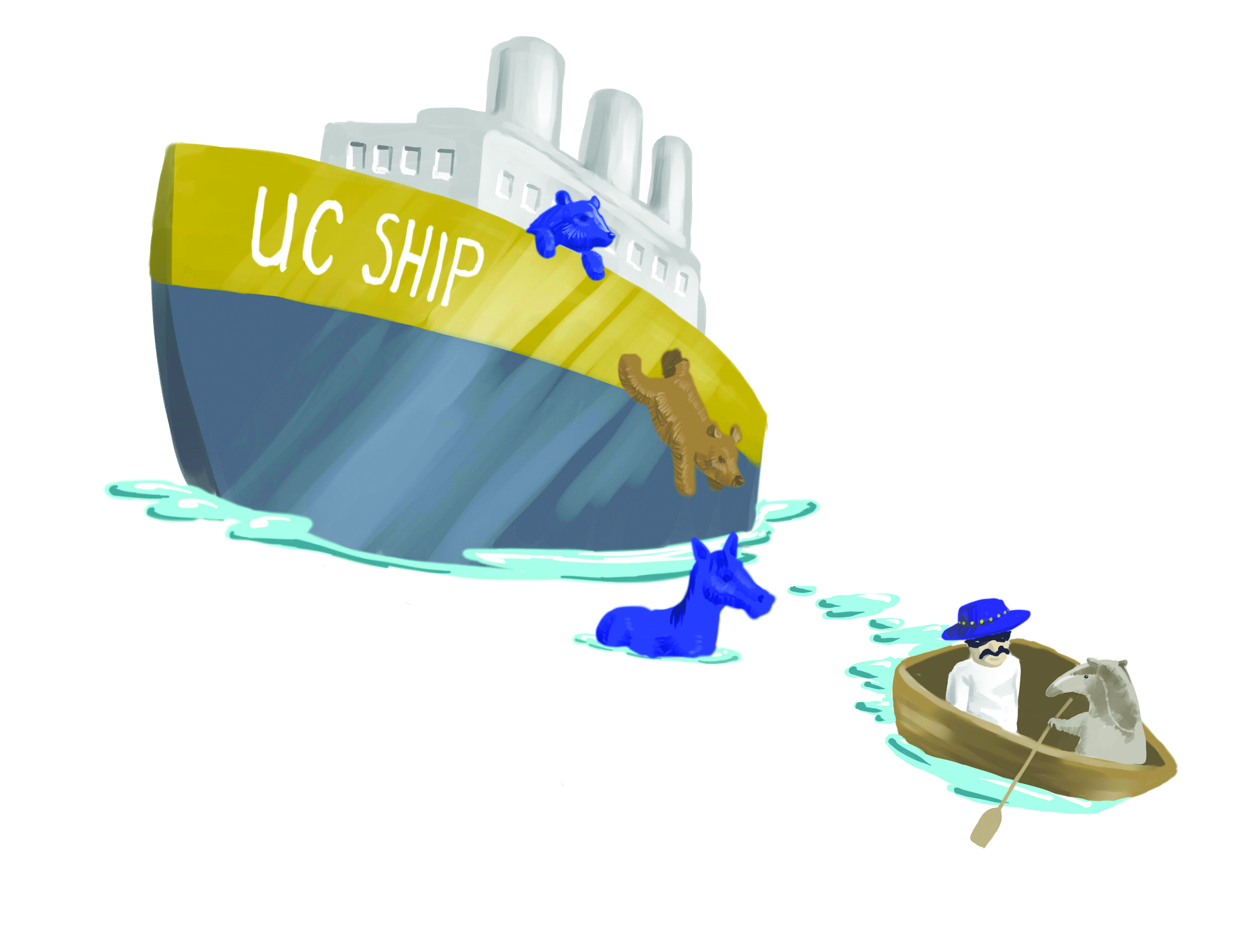Ryan Nelson: UCLA should abandon UC SHIP, move to self-funded plan

By Ryan Nelson
May 9, 2013 12:00 a.m.
The original version of this article contained an error and has been changed. See the bottom of the article for additional information.
The financial illness of the University of California Student Health Insurance Plan appeared early in February, diagnosed initially with a $57 million deficit.
The symptoms continued to worsen, with alleged reports of impending premium and fee increases. Finally, after deliberation among the chancellors, it was decided that quarantine was the next step, and on May 1, all but four University of California campuses elected to remove themselves from UC SHIP in some capacity.
Of the four campuses that remained – San Francisco, Hastings College of the Law, Merced and UCLA – ours is the largest and most visible and seems most well-positioned to determine the future direction the health insurance plan takes.
Despite the fact that UCLA has committed itself to reform UC SHIP for the next school year, it would serve the university’s best interests to begin laying the foundation for an eventual withdrawal and to implement a personalized self-funded plan.
If UCLA stays with UC SHIP, students will likely face a premium increase. However, even with an increase, estimated to be about 16 percent for UCLA undergraduates, the UC SHIP policy will still be more competitive than other options the university has explored. The more important issue surrounding UC SHIP, then, is one of autonomy.
First, some background: A self-funded plan, as far as health insurance is concerned, is one in which an entity, in this case UCLA, collects the money from the people buying in, and divvies it out as medical costs arise. There is usually minimal, if any, coverage provided by outside companies.
UC SHIP falls under this category. As it stands, money is collected into a big pot for the UC system and reallocated according to how much the schools pay in and the amount they take out. For schools like UC Davis and UC Riverside, which have elected to remove themselves from the medical portion of SHIP’s coverage but keep others, like dental or graduate coverage, their payments will be smaller, and they will still receive specific funds for the services they have opted to maintain.
However, of all the UC campuses’ plans, UC Berkeley’s provides the best model for sustainability. Starting next year, UC Berkeley will no longer pay into the pot and will cede all services provided by UC SHIP.
Instead, the campus had to find another option, which it has done by reinstituting a Berkeley-specific fully funded plan. For 20 years prior to joining the systemwide plan, Berkeley had successfully run its own program, and will do so again before considering a return to SHIP.
UCLA would be well served by following Berkeley’s lead. Severing ties with UC SHIP would allow UCLA the autonomy to manage its own insurance systems and to personalize care for its students.
In addition to providing more personalized medical care, a self-funded plan would take the politics out of health care. UCLA would not have to invest in a system that may be at risk of failure due to the mistakes of outside companies contracted by the university.
Before agreeing to stay with the UC SHIP plan, UCLA led the charge to incorporate real time data crunching on a month-to-month basis and worked to incorporate an additional third party accountant to fact check SHIP data from the past two years.
In addition, UCLA has led the way in implementing utilization review – in which the health insurance provider analyzes cases to insure they are being handled effectively – a measure that will provide the UC Office of the President and UCLA with intimate details about the efficiency of the current system.
This will allow UCLA to get an up close look at how a self-funded insurance plan works and would provide the informational foundation for UCLA to eventually branch off and create its own health system.
But starting a personal self-funded plan isn’t so simple. The university would have to establish a network for thousands of students and employees and set premium prices that are at once affordable and provide comprehensive coverage.
For UCLA specifically, several other distinct problems exist. UCLA’s experience next year with UC SHIP will be crucial for providing information on how to organize such a program. Other issues exist outside of this, too.
For starters, space: The Arthur Ashe Student Health and Wellness Center just isn’t big enough to provide services for the entirety of the UCLA community. This issue could potentially be remedied by expanding services to areas such as the Ronald Reagan UCLA Medical Center or the other clinics within the UCLA Health System scattered across west Los Angeles. Though UCLA may not provide an ideal central location like Berkeley can, the trade-off is worth it if a viable transportation or expansion solution can be found.
The second obstacle is logistics. As demonstrated with the instability of the UC SHIP system, it is difficult to establish and manage a large-scale insurance system.
In the end, it comes down to a debate of autonomy versus convenience. UC SHIP may be slightly more convenient in the short term, but allowing UCLA to localize its expenditures can help set it up for a more stable future.
Correction: UC Berkeley is returning to its own fully funded insurance plan.


